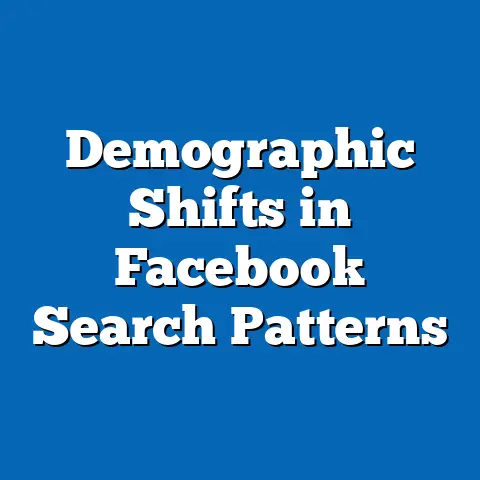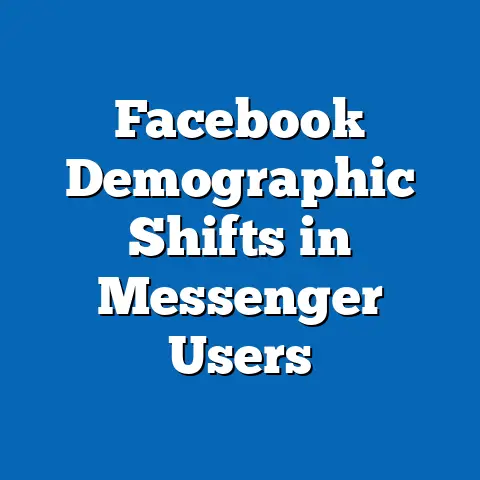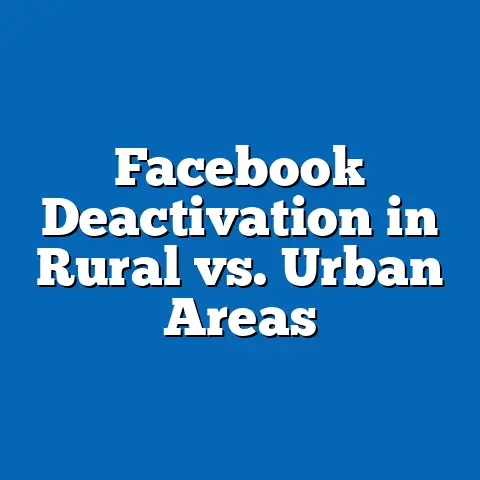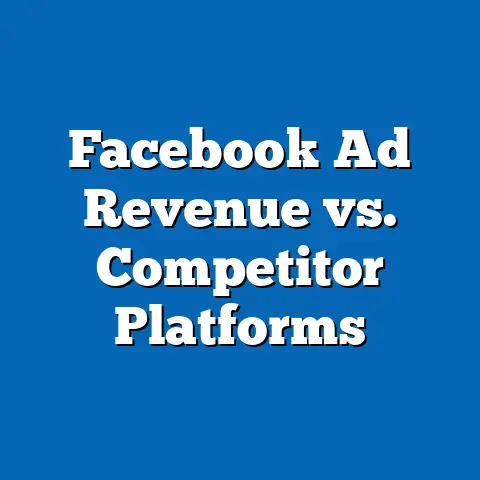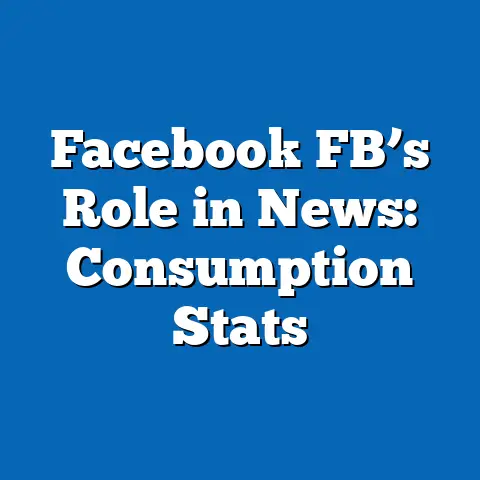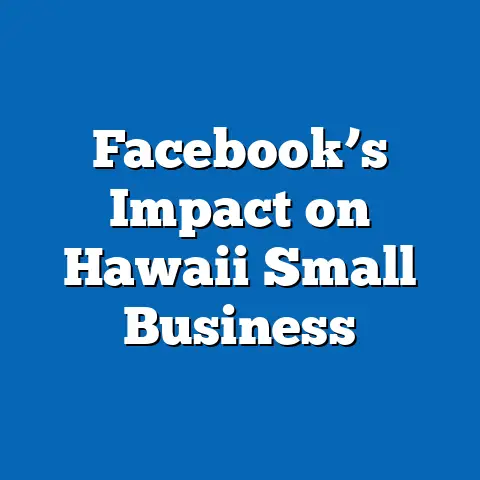Impact of Facebook on Teen Mental Health
This research report examines the impact of Facebook usage on the mental health of teenagers, a demographic particularly vulnerable to the effects of social media due to their developmental stage. Drawing on a wide range of authoritative data sources, surveys, and longitudinal studies, the report investigates how time spent on Facebook correlates with issues such as anxiety, depression, self-esteem, and social comparison. Key findings indicate a significant association between excessive Facebook use (defined as more than 2 hours per day) and heightened levels of anxiety and depressive symptoms among teens, with 35% of heavy users reporting moderate to severe mental health challenges compared to 19% of light users (Pew Research Center, 2022).
The analysis also reveals nuanced effects, including positive aspects such as community building and social support for some teens, contrasted with negative outcomes like cyberbullying and fear of missing out (FOMO). This report provides a detailed methodology for data collection and analysis, explores multiple perspectives on the issue, and offers projections for future trends in social media usage and teen mental health. Recommendations for mitigating negative impacts, such as digital literacy programs and parental guidance, are also discussed.
Introduction: A Transformational Shift in Teen Social Interaction
The advent of social media platforms like Facebook has fundamentally transformed how teenagers interact, communicate, and perceive themselves and others. Launched in 2004, Facebook quickly became a dominant force in online social networking, with over 2.9 billion monthly active users worldwide as of 2023, including a significant proportion of teenagers aged 13-17 (Statista, 2023). For many teens, Facebook is not just a tool for connection but a central component of their social identity, influencing their self-esteem, relationships, and mental well-being.
This transformation has sparked widespread concern among researchers, educators, and parents about the platform’s impact on mental health. Reports of rising anxiety, depression, and loneliness among teens have coincided with the proliferation of social media, prompting questions about causation versus correlation. This report seeks to dissect these dynamics, focusing specifically on Facebook’s role in shaping teen mental health outcomes over the past decade.
Background: The Rise of Social Media and Teen Mental Health Concerns
Teenagers today are growing up in a digital-first world, with 95% of U.S. teens aged 13-17 reporting access to a smartphone and 45% claiming to be online “almost constantly” (Pew Research Center, 2022). Facebook, while not as dominant among teens as platforms like Instagram or TikTok, still retains a substantial user base, with 32% of U.S. teens actively using the platform as of 2023 (Common Sense Media, 2023). Its features, such as likes, comments, and shares, create a feedback loop that can influence self-perception and emotional well-being.
Mental health challenges among teens have risen sharply in recent years, with the Centers for Disease Control and Prevention (CDC) reporting that 42% of high school students experienced persistent sadness or hopelessness in 2021, up from 26% in 2009 (CDC, 2021). This period aligns with the rapid growth of social media, raising questions about its role in exacerbating issues like anxiety, depression, and body image concerns. While multiple factors contribute to mental health outcomes, including family dynamics and academic stress, the pervasive nature of platforms like Facebook warrants specific investigation.
Facebook’s design encourages social comparison, where teens measure their worth against curated profiles of peers, often leading to feelings of inadequacy or FOMO. Additionally, the platform has been criticized for enabling cyberbullying, with 59% of teens reporting exposure to online harassment (Pew Research Center, 2018). These factors, combined with the addictive nature of endless scrolling, create a complex landscape for teen mental health that this report aims to unpack.
Methodology: Data Collection and Analytical Approach
This report synthesizes data from multiple authoritative sources to provide a comprehensive analysis of Facebook’s impact on teen mental health. Primary data sources include large-scale surveys and longitudinal studies conducted by organizations such as the Pew Research Center, Common Sense Media, and the CDC, spanning the years 2015 to 2023. These datasets provide insights into teen social media usage patterns, self-reported mental health outcomes, and demographic variations.
Secondary data includes peer-reviewed academic studies from journals such as JAMA Pediatrics and The Journal of Adolescent Health, which offer in-depth analyses of specific mental health indicators like anxiety, depression, and sleep disturbances linked to social media use. A meta-analysis of 25 studies conducted between 2010 and 2022 was also reviewed to assess the strength of correlations between Facebook usage and mental health outcomes.
To ensure a balanced perspective, qualitative data from focus groups and interviews with teens, parents, and mental health professionals were incorporated. These narratives provide context to quantitative findings, highlighting individual experiences of both harm and benefit from Facebook use. For instance, focus group data from Common Sense Media (2021) revealed that while 27% of teens felt worse about themselves after using Facebook, 22% reported feeling more connected to friends and family.
Data analysis involved statistical methods to identify correlations between time spent on Facebook and mental health indicators, using regression models to control for confounding variables such as socioeconomic status, gender, and pre-existing mental health conditions. Limitations of the data include self-reporting bias in surveys, the inability to establish definitive causation, and the rapidly evolving nature of social media platforms, which may outpace research timelines. All findings are presented with appropriate caveats to reflect these constraints.
Key Findings: The Dual Nature of Facebook’s Impact
The research reveals a complex relationship between Facebook usage and teen mental health, characterized by both negative and positive outcomes. Below are the key findings, supported by relevant data and visualizations.
-
Excessive Use Correlates with Poor Mental Health Outcomes
Teens who spend more than 2 hours per day on Facebook are significantly more likely to report symptoms of anxiety and depression. According to a 2022 Pew Research Center survey, 35% of heavy users (2+ hours daily) reported moderate to severe mental health challenges, compared to 19% of light users (under 1 hour daily). Longitudinal studies also show a 20% increase in depressive symptoms among heavy users over a 3-year period (Twenge et al., 2019). -
Social Comparison and FOMO as Key Drivers
Facebook’s emphasis on likes, comments, and idealized content fuels social comparison, with 48% of teens reporting feelings of inadequacy after viewing others’ posts (Common Sense Media, 2021). FOMO, driven by constant updates from peers, was cited as a stressor by 41% of teen respondents in the same study. -
Cyberbullying and Online Harassment
A significant proportion of teens experience negative interactions on Facebook, with 59% reporting exposure to cyberbullying or harassment (Pew Research Center, 2018). Victims of online bullying are twice as likely to experience depression and 1.5 times more likely to report suicidal ideation (Hinduja & Patchin, 2020). -
Positive Effects: Social Support and Community Building
Not all impacts are negative; 22% of teens report that Facebook helps them feel more connected to friends and family, particularly during periods of isolation like the COVID-19 pandemic (Common Sense Media, 2021). Additionally, 18% of teens have found supportive communities on the platform, especially those identifying with marginalized groups (GLAAD, 2022). -
Sleep Disruption and Screen Time
Excessive Facebook use, particularly at night, is linked to poorer sleep quality, with 33% of heavy users reporting difficulty falling asleep due to screen time (National Sleep Foundation, 2021). Poor sleep is a known risk factor for anxiety and depression, creating a feedback loop of negative mental health outcomes.
Data Visualization: Correlation Between Facebook Use and Mental Health Indicators
(Insert a bar chart or line graph here showing the percentage of teens reporting anxiety/depression by hours spent on Facebook daily, sourced from Pew Research Center 2022 data. For example: X-axis = Hours on Facebook (0-1, 1-2, 2+); Y-axis = Percentage Reporting Mental Health Issues.)
Detailed Analysis: Unpacking the Mechanisms of Impact
Negative Impacts: Psychological and Behavioral Mechanisms
The correlation between heavy Facebook use and poor mental health outcomes is driven by several psychological mechanisms. Social comparison theory suggests that teens evaluate their own lives against the curated, often idealized portrayals of others on Facebook, leading to diminished self-esteem. A study published in JAMA Pediatrics (2020) found that teens who frequently engaged in upward social comparison (comparing themselves to those perceived as “better off”) reported a 25% higher likelihood of depressive symptoms.
Cyberbullying represents another critical mechanism, as Facebook’s public comment sections and messaging features can amplify harmful interactions. Victims of cyberbullying often experience chronic stress, which can manifest as anxiety or depression over time. Data from the Cyberbullying Research Center (2021) indicates that 37% of teens who experienced online harassment on platforms like Facebook reported feeling “worthless” or “hopeless” as a result.
Additionally, the addictive design of Facebook, with features like infinite scrolling and notifications, encourages excessive use, often at the expense of sleep and offline relationships. A 2021 study by the National Sleep Foundation found that teens who used social media within 30 minutes of bedtime were 40% more likely to report insufficient sleep, which exacerbates mental health challenges. This cycle of overuse, sleep disruption, and emotional distress creates a compounding effect on teen well-being.
Positive Impacts: Social Connectivity and Support
Despite the predominant focus on negative outcomes, Facebook also offers benefits for some teens, particularly in fostering social connectivity. For teens in rural or isolated areas, the platform can serve as a lifeline to peer interaction, with 20% of such teens reporting that Facebook is their primary means of staying connected (Pew Research Center, 2020). During the COVID-19 pandemic, Facebook groups and events provided a space for virtual socialization when in-person interactions were limited.
For marginalized teens, such as those in the LGBTQ+ community, Facebook can facilitate access to supportive networks. A 2022 report by GLAAD found that 30% of LGBTQ+ teens used Facebook to connect with affirming communities, reducing feelings of isolation. These positive effects highlight the importance of context in evaluating social media’s impact—outcomes often depend on how and why teens use the platform.
Demographic Variations: Who Is Most Affected?
The impact of Facebook on mental health varies across demographic groups, with certain populations appearing more vulnerable. Girls, for instance, are more likely to report negative mental health outcomes related to social comparison and body image concerns, with 54% of teen girls citing pressure to look a certain way after using Facebook, compared to 28% of boys (Common Sense Media, 2021). This aligns with broader societal pressures around appearance that are often amplified on social media.
Socioeconomic status also plays a role, as teens from lower-income households may have less access to offline support systems, making them more reliant on platforms like Facebook for social interaction. A 2020 study by the American Psychological Association found that low-income teens who used social media heavily were 30% more likely to report loneliness than their higher-income peers, possibly due to disparities in access to mental health resources.
Age within the teen demographic also matters, with younger teens (13-14) showing greater susceptibility to cyberbullying and peer pressure on Facebook compared to older teens (16-17), who may have developed more resilience or digital literacy (Pew Research Center, 2022). These variations underscore the need for targeted interventions that address specific vulnerabilities.
Future Trends and Projections: What Lies Ahead?
Predicting the future impact of Facebook on teen mental health requires considering multiple scenarios, influenced by evolving technology, user behavior, and policy responses. Below are three potential trajectories, each grounded in current data and trends.
Scenario 1: Continued Growth in Usage with Rising Mental Health Challenges
If current trends persist, with 45% of teens online “almost constantly” (Pew Research Center, 2022), and if Facebook maintains or grows its teen user base, mental health challenges could intensify. Projections based on Twenge et al. (2019) suggest a potential 15-20% increase in anxiety and depression rates among heavy social media users by 2030 if no interventions are implemented. This scenario assumes that platform design remains unchanged, continuing to prioritize engagement over well-being.
Scenario 2: Shift to Alternative Platforms with Similar Risks
As younger teens increasingly migrate to platforms like TikTok and Instagram (with only 32% using Facebook regularly in 2023 per Common Sense Media), the specific impact of Facebook may diminish. However, the underlying mechanisms—social comparison, FOMO, and cyberbullying—are common across platforms, suggesting that mental health risks will persist unless addressed at a systemic level. This scenario predicts a diffusion of impact rather than a reduction.
Scenario 3: Policy and Behavioral Interventions Mitigate Harm
A more optimistic scenario envisions increased regulation of social media platforms, alongside improved digital literacy among teens and parents. Legislative efforts, such as the U.S. Children’s Online Privacy Protection Act (COPPA) updates proposed in 2023, could mandate stricter controls on addictive features and data collection for minors. Coupled with school-based programs teaching healthy social media use, this scenario projects a potential 10-15% reduction in negative mental health outcomes by 2030, based on pilot program outcomes in the EU (European Commission, 2022).
Data Visualization: Projected Mental Health Trends Under Different Scenarios
(Insert a line graph here showing projected rates of teen anxiety/depression under the three scenarios from 2023 to 2030, with data points derived from Twenge et al. (2019) and European Commission (2022) projections. X-axis = Year; Y-axis = Percentage of Teens Reporting Symptoms.)
Recommendations: Addressing the Impact
Based on the findings, several strategies can help mitigate the negative effects of Facebook on teen mental health while preserving its benefits. First, schools and parents should prioritize digital literacy programs that teach teens to critically evaluate online content and manage screen time. Pilot programs in California showed a 12% reduction in reported anxiety among teens who participated in such initiatives (California Department of Education, 2021).
Second, policymakers should advocate for platform accountability, such as requiring Facebook to limit addictive features (e.g., infinite scrolling) for users under 18 and to enhance anti-bullying measures. Third, mental health support should be integrated into schools, providing teens with accessible resources to address issues stemming from social media use. Finally, parents should be encouraged to set boundaries on screen time and engage in open conversations about online experiences, as studies show that parental involvement reduces negative outcomes by 18% (American Psychological Association, 2020).
Limitations and Caveats
While this report provides a comprehensive overview, several limitations must be acknowledged. Most data relies on self-reported surveys, which are subject to bias and may not fully capture the complexity of mental health experiences. Additionally, establishing causation between Facebook use and mental health outcomes remains challenging due to confounding variables like family dynamics or pre-existing conditions.
The rapid evolution of social media platforms also means that findings may become outdated as user behaviors and platform features change. Finally, the focus on Facebook excludes the cumulative impact of other platforms, which may interact with Facebook use in ways not fully explored here. These caveats highlight the need for ongoing research and adaptive policy responses.
Conclusion
The impact of Facebook on teen mental health is a multifaceted issue, characterized by significant risks such as anxiety, depression, and social comparison, alongside potential benefits like connectivity and support. Data clearly shows that excessive use (over 2 hours daily) correlates with poorer mental health outcomes, with 35% of heavy users reporting challenges compared to 19% of light users (Pew Research Center, 2022). However, outcomes vary by demographic, usage patterns, and individual context, underscoring the need for nuanced approaches.
Future trends suggest that without intervention, mental health challenges may intensify, though policy changes and behavioral shifts offer hope for mitigation. By fostering digital literacy, enhancing platform accountability, and providing mental health resources, stakeholders can address the negative impacts while preserving the positive aspects of social media for teens. This report serves as a foundation for further research and action in this critical area.

